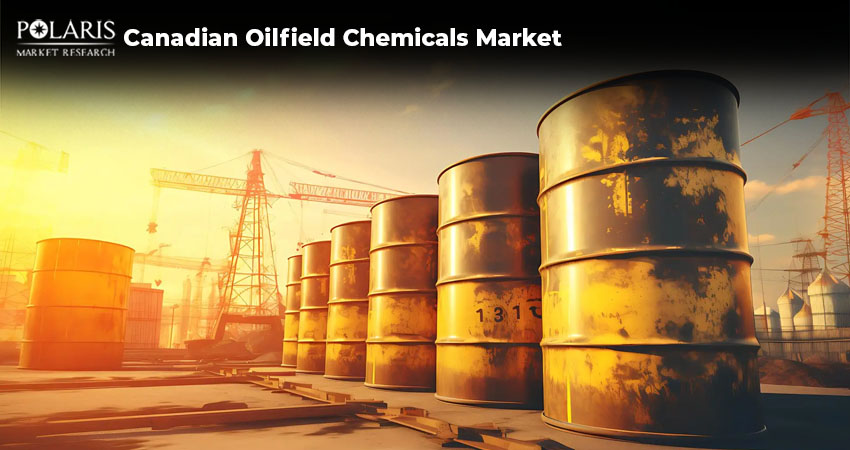How Oilfield Chemicals Ensure Efficient Oil and Gas Operations Across Canada?

Canada’s vast oil and gas reserves, especially those in Alberta’s oil sands and the Western Canadian Sedimentary Basin, have positioned the country as a key player in the global energy landscape. Central to unlocking these resources are oilfield chemicals, which are used throughout the life of an oil or gas well. In Canada, where the climate is tough and regulations are strict, oilfield chemicals play a crucial role by improving oilfield efficiency, protecting equipment, and meeting environmental standards.
This blog post explores the basics of oilfield chemicals and their key functions in the oilfield lifecycle. It also sheds light on their importance in Canada and details some of the major innovations in oilfield chemistry. Continue reading!
What Are Oilfield Chemicals?
Oilfield chemicals are specialized compounds used in oil and gas extraction to improve the safety efficiency, and performance of oil and gas exploration. These chemicals are critical for various oilfield processes, including drilling, stimulation, production, and cementing. They are typically tailored for specific applications. In addition, oilfield chemicals may be natural, synthetic, or a blend of both.
Types of Oilfield Chemicals
Here’s a look at some of the most common types of oilfield chemicals:
Drilling Fluids and Additives: Drilling fluids and additives support the drilling process by controlling pressure and cooling the drill bit. They also carry rock cuttings to the surface. Commonly used drilling fluids and additives include bentonite, polymers, lubricants, and fluid-loss control agents.
Corrosion Inhibitors: Metal equipment like pipes and tanks are often exposed to moisture, gases, and salty water. Corrosion inhibitors are used to prevent metal equipment from rusting or breaking down.
Scale and Wax Inhibitors: Scale and wax inhibitors are used to stop the build-up of hard minerals or waxy deposits inside pipelines or wellbores. In cold regions like Canada, wax hardens more easily, making chemicals essential to keep the flow steady.
Biocides: Oilfields use biocides to kill microbes and bacteria that may produce harmful gases, speed up corrosion, or lead to other problems.
Cementing Chemicals: Cementing chemicals strengthen and stabilize the well structure by improving the bonding of cement to the steel casing and surrounding rock. Additives like accelerators or retarders help control how fast the cement sets, making them crucial in Canada’s varying temperature conditions.
Demulsifiers: Demulsifiers are used to separate water and salt from crude oil. They act as emulsion breakers, destabilizing the water-in-oil emulsion that naturally forms during oil extraction. Water-soluble demulsifiers and oil-soluble demulsifiers are the two main demulsifier types.
Why Are Oilfield Chemicals Important in Canada?
Canada is rich in oil and gas reserves. But the country also presents some of the most demanding environments in which to extract them. Below, we’ve explained the importance of the Canadian oilfield chemicals market:
Harsh Climate and Cold Weather Performance
One of the major challenges is Canada’s extremely cold climate. In key oil-producing provinces like Alberta and Saskatchewan, winter temperatures often drop below -40°C. These low temperatures cause problems such as fluid thickening or freezing, crystal forming in pipelines, and reduced chemical reactivity. The frigid climate can also result in equipment failure due to the expansion and contraction of materials. Oilfield chemicals such as cold-resistant drilling fluids, antifreeze additives, and pour point depressants ensure stable operations by ensuring that even the thickest oil continues to move through pipelines and production systems.
Unconventional Oil Sources
Canada is also known for its unconventional oil sources, especially the Alberta oil sands and tight oil reserves found in shale formations. The unconventional sources aren’t always easy to extract. For instance, bitumen from the oil sands is highly viscous and often mixed with sand, clay, and water. Extracting and processing this type of oil needs the assistance of advanced chemicals. The use of solvents and dispersants in unconventional oil fields helps separate oil from sand and water.
Complex and Varying Geology
The oil and gas fields in Canada span a wide variety of geological formations, ranging from porous sandstone to dense shale. Each of these rock types behaves differently under pressure and reacts differently to drilling fluids and recovery methods. As a result, oilfields use customized drilling fluids to match geological conditions. Reservoir-specific oil chemicals like polymer or alkaline-surfactant-polymer systems help maximize oil recovery based on rock type and oil composition.
Remote Locations and Infrastructure Challenges
Several oilfields in Canada are located in remote areas. Transporting equipment, personnel, and chemicals to these locations is costly and time-consuming. Storage limitations and inconsistent access to fresh water further contribute to the overall complexity. Specialized compounds like multi-functional and concentrated chemicals help by reducing the volume needs and saving space. Low-dosage rate (LDR) chemicals achieve desired effects with minimal use, making them ideal for remote storage.
Major Innovations in Oilfield Chemicals
Some of the key developments in the Canadian oilfield chemicals market include:
Rise of Green Chemistry: Canadian companies are shifting towards the use of biodegradable and non-toxic chemicals made from renewable sources. The use of these chemicals helps meet environmental standards while maintaining performance.
Nanotechnology in Oilfield Applications: Nanoparticles are being increasingly used to improve drilling fluids and enhance oil recovery. These particles offer enhanced control, better efficiency, and reduced waste.
Smart Chemicals and Responsive Systems: Smart chemicals respond to changes in pH, temperature, or pressure. The use of these chemicals ensures targeted action only when needed, lowering chemical use and improving results.
Water Recycling and Treatment Technologies: Advanced water treatment equipment allows produced water to be cleaned and reused. This reduces freshwater usage and supports sustainable fracking operations.
In Summary
Oilfield chemicals are an essential part of oil and gas operations. Without them, several oilfield processes would not be possible or would become too slow, unsafe, or expensive. In a country like Canada, where environmental protection is a priority and the varying climate adds extra challenges, using oilfield chemicals is a necessity.

